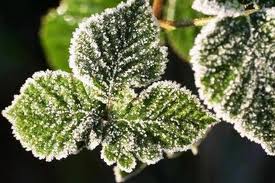How Moisture-Loc Protects Plants from Freezing
Cells are killed when ice is formed within the cell. Freezing temperature alone does not kill cells. In order to form ice the water within cells requires “seeding” of the water with an “ice crystal” or anything that mimics an ice crystal.
 If no “ice crystals” form, the water in plant cells can supercool well below the freezing point, e.g. below 0C or 32F…e.g. near minus 100C. In other words it does not form ice even well below the freezing point if no “ice crystal” is present..thus one way of preventing death of cells at freezing temperatures is to prevent the formation of “ice crystals” within cells.
If no “ice crystals” form, the water in plant cells can supercool well below the freezing point, e.g. below 0C or 32F…e.g. near minus 100C. In other words it does not form ice even well below the freezing point if no “ice crystal” is present..thus one way of preventing death of cells at freezing temperatures is to prevent the formation of “ice crystals” within cells.
The sources of “ice crystals” in nature are:
- Natural ice, e.g. from frost, snow, etc.
- Ice nucleating bacteria…INA bacteria which mimics an ice crystal…this is how snow is formed in the atmosphere.
Not all bacteria are INA bacteria…only those that have a special protein that mimics ice crystals.
Most INA bacteria is found ubiquitously in nature, or may be found in some plant tissues.
How does Moisture-Loc protect plants from “ice crystals”?
- One theory is that it forms a prophylactic barrier around the surfaces of plant tissues and prevents the INA bacteria from entering the plant tissues. It may also prevent ice formed on the surfaces from entering the tissues. This is all theory and yet to be proven.
How else does Moisture-Loc protect plants from injury during freezing conditions?
Many plants are sensitive to desiccation…we know a moisture barrier can prevent plants form dehydrating during freezing conditions. The best know anti-transpirant for this purpose, according to extensive university studies, is Moisture-Loc.
